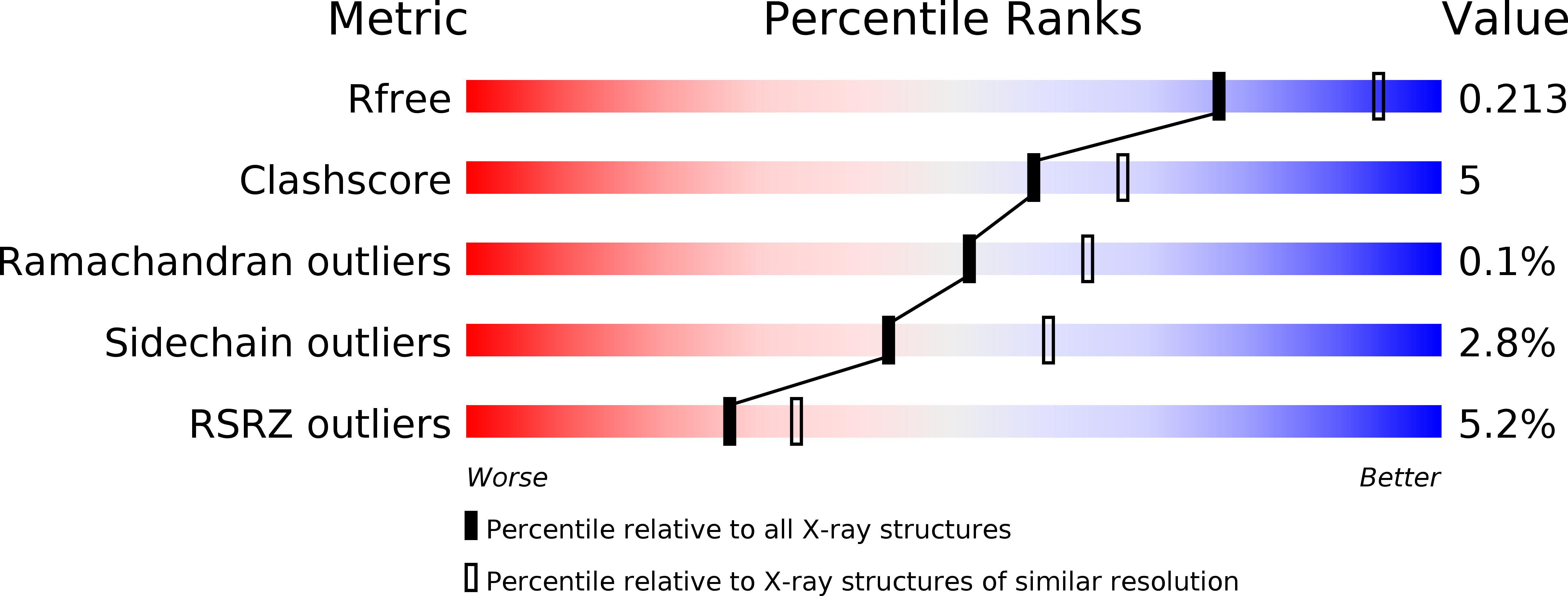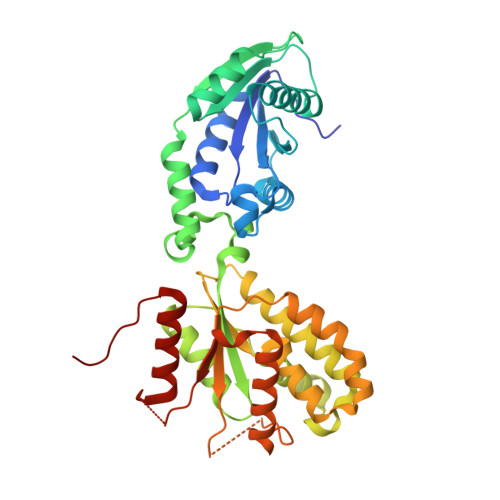Structural and Functional Characterization of NadR fromLactococcus lactis.
Stetsenko, A., Singh, R., Jaehme, M., Guskov, A., Slotboom, D.J.(2020) Molecules 25
- PubMed: 32331317
- DOI: https://doi.org/10.3390/molecules25081940
- Primary Citation of Related Structures:
6GYE, 6GYF, 6GZO - PubMed Abstract:
NadR is a bifunctional enzyme that converts nicotinamide riboside (NR) into nicotinamide mononucleotide (NMN), which is then converted into nicotinamide adenine dinucleotide (NAD). Although a crystal structure of the enzyme from the Gram-negative bacterium Haemophilus influenzae is known, structural understanding of its catalytic mechanism remains unclear. Here, we purified the NadR enzyme from Lactococcus lactis and established an assay to determine the combined activity of this bifunctional enzyme. The conversion of NR into NAD showed hyperbolic dependence on the NR concentration, but sigmoidal dependence on the ATP concentration. The apparent cooperativity for ATP may be explained because both reactions catalyzed by the bifunctional enzyme (phosphorylation of NR and adenylation of NMN) require ATP. The conversion of NMN into NAD followed simple Michaelis-Menten kinetics for NMN, but again with the sigmoidal dependence on the ATP concentration. In this case, the apparent cooperativity is unexpected since only a single ATP is used in the NMN adenylyltransferase catalyzed reaction. To determine the possible structural determinants of such cooperativity, we solved the crystal structure of NadR from L. lactis (NadR Ll ). Co-crystallization with NAD, NR, NMN, ATP, and AMP-PNP revealed a 'sink' for adenine nucleotides in a location between two domains. This sink could be a regulatory site, or it may facilitate the channeling of substrates between the two domains.
Organizational Affiliation:
Groningen Biomolecular Science and Biotechnology Institute, University of Groningen, Nijenborgh 4, 9747 AG Groningen, The Netherlands.
















